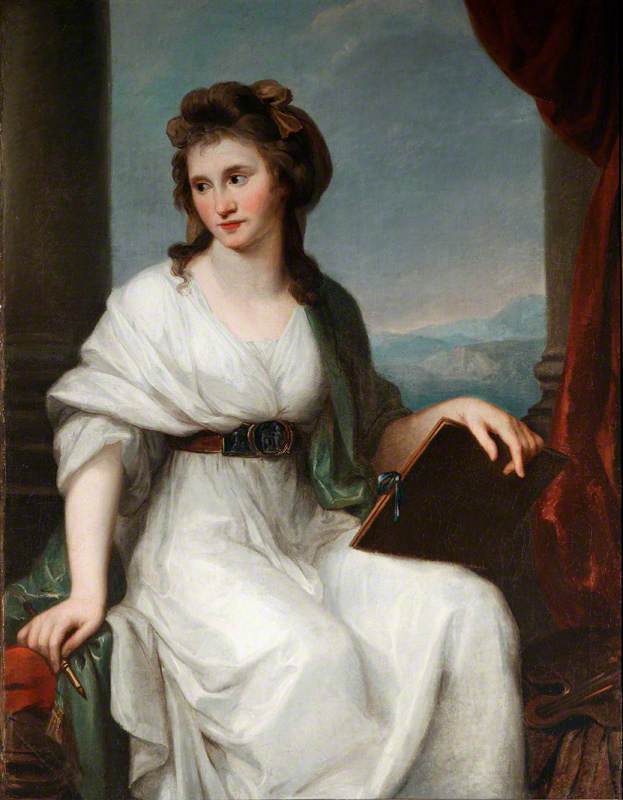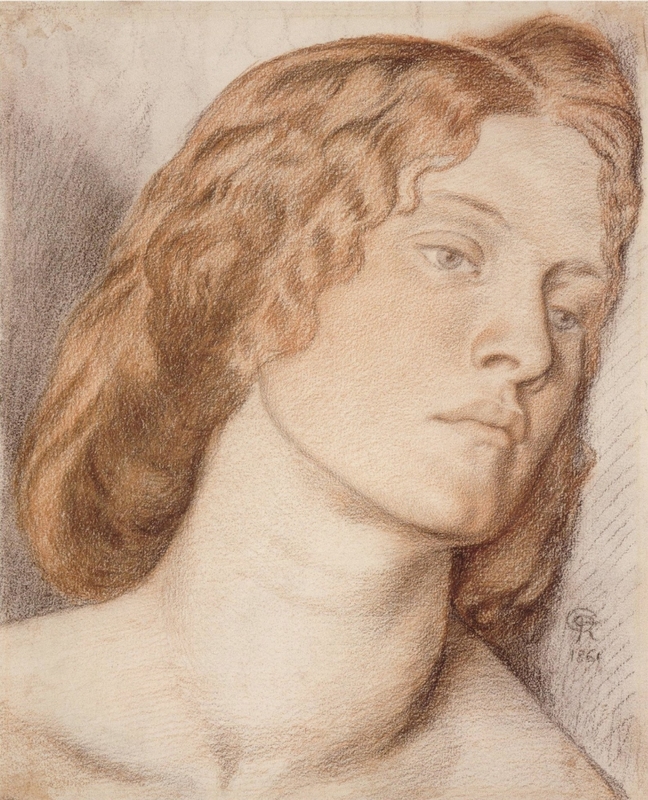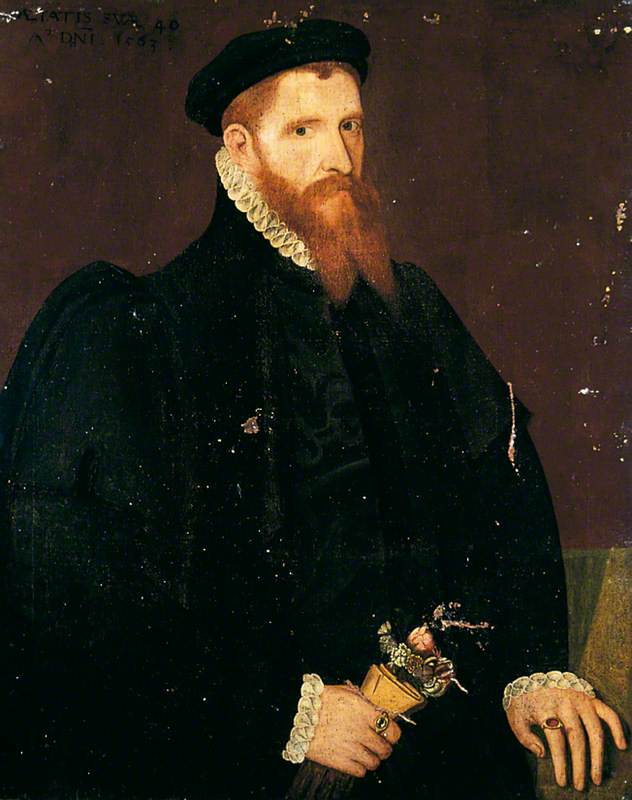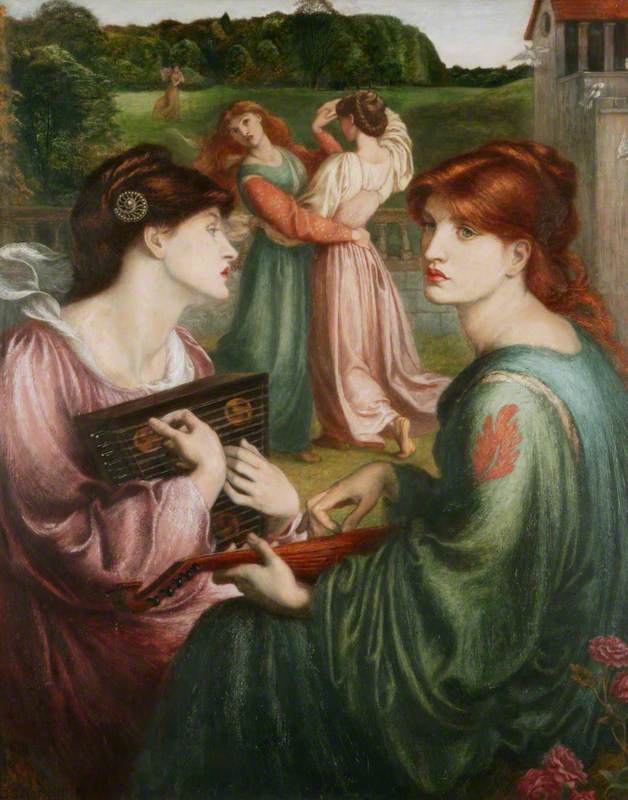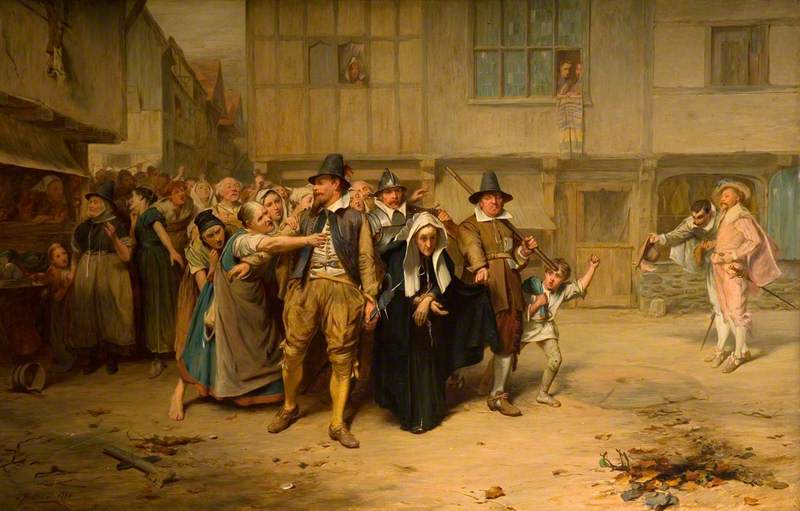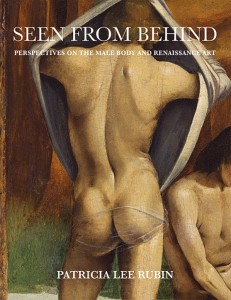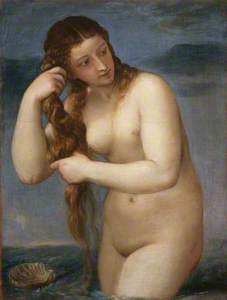Rachael Gibson is a freelance hair editor and runs the Instagram account @thehairhistorian. Rachael was our guest for the Art Matters podcast episode on hair trends throughout art history.
Red hair has always been shorthand for scandal, from the earliest depictions of the ultimate ‘fallen woman’, Mary Magdalene, to Dolly Parton’s love rival Jolene and her flaming locks of auburn hair. It’s a visual clue that a woman is wild, fiery or otherwise dangerous; and it’s always women – let’s be honest, ginger dudes are often portrayed as cute at best, nerdy at worst, never sexy or scandalous.
As for those vast swathes of flowing hair so beloved by the Pre-Raphaelites, that comes down to the good old-fashioned male gaze.
Scholars have cited countless reasons for the reputation of redheads. Some suggest its scarcity (less than 2% of the world’s population) led ancient people to believe it was associated with evil, with redheads variously named as vampires, witches and direct assistants to the devil. Others suggest it’s the colour of wanton women; an opinion given credence by Louis of France, who suggested in 1254 that sex workers should dye their hair red, so they were more easily distinguishable. Some put it down to history pure and simple; early Gaels, Picts and Scots were red-haired and posed a threat to Britain, leaving a life-long legacy of dangerous people (with really great hair).
Regardless of its reputation, there’s no denying that red hair is something that gets you noticed – a 1997 survey found that hair colour was the opening topic of conversation for 69% of redheads and, yes, that’s as tedious as it sounds. Here are some of the most memorable scarlet women from the collections.
Cleopatra
It’s hard to imagine Cleopatra with anything other than Elizabeth Taylor’s black wig, but the Egyptian queen was known to be a redhead who enhanced her hair colour with henna. Numerous images portray the queen with red hair, from sixteenth- and seventeenth-century portraits to the ancient wall painting at Herculaneum which clearly shows off her colour. Cleopatra has another interesting link to hair, too – she’s rumoured to have carried a vile of poison in a fashionable hairpin, which she later used to commit suicide.
Venus Rising from the Sea
Venus Rising from the Sea (Venus Anadyomene)
c.1520
Titian (c.1488–1576) 
One man who helped to rebrand redheads was Italian Renaissance painter Titian, who produced paintings during the late 1500s featuring beautiful women with auburn hair, which became known as ‘Titian red’. Fashionable Venetian women who wanted to replicate the look used rhubarb, turmeric and saffron to imitate the shade, which the artist used for just about every woman he painted – from Venus to the Virgin Mary.
Queen Elizabeth I
When it comes to iconic redheads, Elizabeth I is arguably up there as the most memorable. Her natural auburn hair not only set trends but also ushered in a new wave of retail hair colours, designed to get her look. Fashionable court ladies used potent concoctions of ingredients including sulfuric acid, rust and lead to achieve the look and even men weren’t immune to the trend, with loyal royalists colouring their beards to match the Queen’s look. Some stories suggest that such was the popularity of red hair, even royal horses had their tales dyed orange to match.
Nell Gwyn
Red hair has long been associated with seductresses, including Royal mistress, Nell Gwyn. The actress, and long-time lover of Charles II, is generally portrayed with dark red hair, although relatively few portraits were painted during her lifetime, given her route to fame. The links between red hair and passionate, seductive women are persistent (Jessica Rabbit, Ginger Spice, Raquel Welch, Julia Roberts) but ultimately grounded in nothing, despite various studies declaring redheads as fiery, volatile and sinful.
La ghirlandata
The Pre-Raphaelites were fascinated with redheads, with vast quantities of images featuring flowing, curly, red hair dominating work from the era. Dante Gabriel Rossetti, John William Waterhouse and John Everett Millais, in particular, held a passion for these women – perhaps inspired by famous red-haired Pre-Raphaelite models and muses, Elizabeth Siddal, Fanny Cornforth and Alexa Wilding.
Red hair wasn’t necessarily in favour at the time, but these artists depicted the colour with such magnificence and regularity that it changed opinions – and became a trend which is still referred to today.
As for those vast swathes of flowing hair so beloved by the Pre-Raphaelites, that comes down to the good old-fashioned male gaze. Hair in the Victorian era was always worn up in public, with loose hair restricted solely to your husband’s eyes in the bedroom – it’s a symbol of pure sexuality and baring all; there’s a reason the act of pinning up hair is called ‘dressing’ it. These images portray pure beauty and sex appeal, challenging the notion of the sentimental, sentient Victorian housewife and replacing it with someone unconventional, independent – and in the words of Rossetti, ‘a stunner’ (yep, he coined that term).
Mrs Lillie Langtry
Mrs Lillie Langtry (1853–1929)
1880
George Frederic Watts (1817–1904) 
Someone who was undoubtedly considered a stunner was late-nineteenth-century actress Lillie Langtry, who was another royal mistress. Despite her appetite for scandal, Lillie was beloved by the public and became one of the biggest celebrities of the era – even spawning the ‘Langtry Knot’ hairstyle.
Lillie paved the way for a generation of redhead actresses who would go on to be beloved icons – from Rita Hayworth to Lucille Ball – perhaps due to the spark and personality that’s become synonymous with the redhead, rather than the reputation that it’s just the best colour to show up on camera…
Rachael Gibson, hair editor and producer





